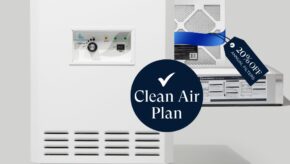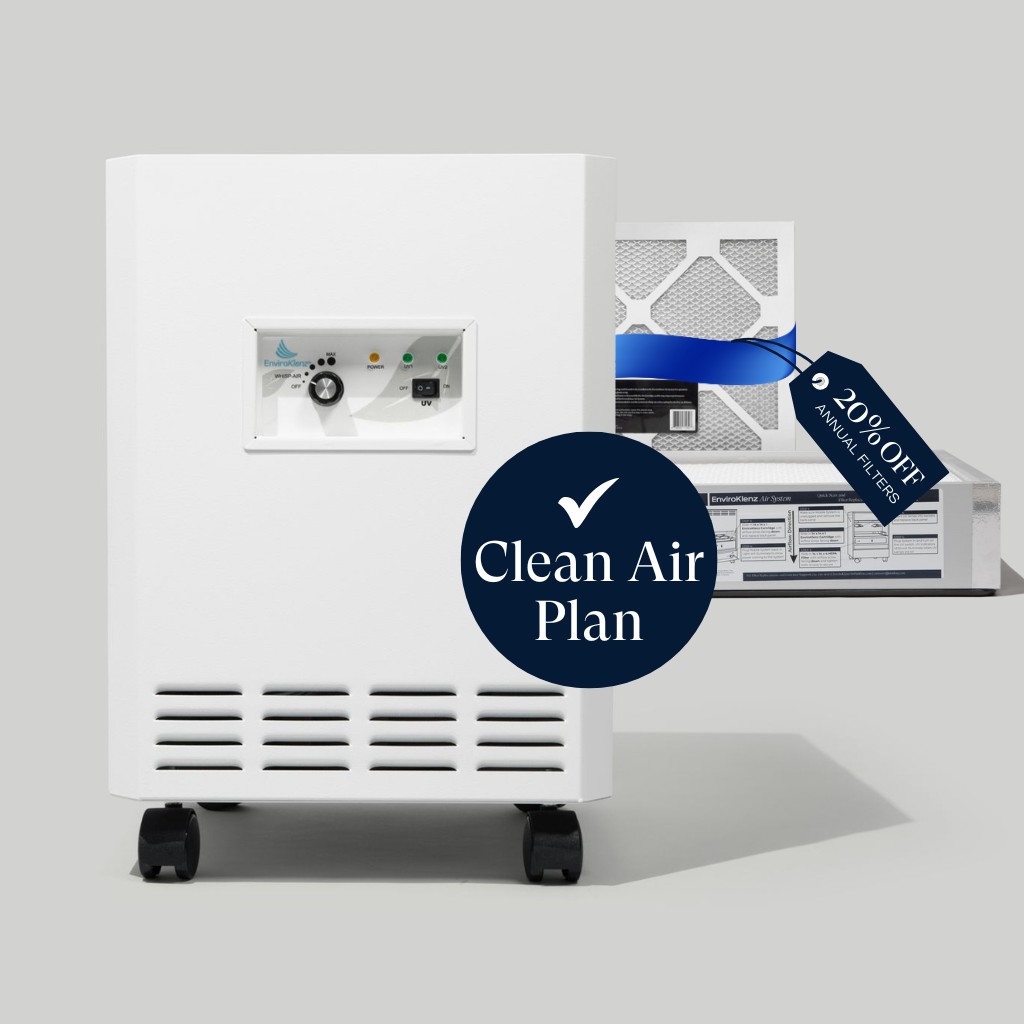EnviroKlenz® in a Corporate Office Center
An indoor air quality case study.
Industry Overview
There is a widespread concern for air quality throughout the city of London, with a particular focus on urban areas experiencing high concentrations of air pollution. Research conducted by Imperial College London reveals that 99% of the city of London does not meet the recommended limit for particulate matter, PM2.5, set by the World Health Organization (WHO). Legal limits of PM2.5 and nitrogen dioxide pollutions are set at four times the WHO recommendation, which possesses health risks to everyone exposed to these inadequate levels.
Ventilation plays a large factor in the remediation of poor indoor air quality, especially for business buildings and offices. Reliance on natural ventilation systems can provide airflow, however, it can also allow higher amounts of outdoor air pollution from combustion and automobiles to come indoors. The addition of mechanical ventilation, when possible, is recommended for filtration and removal of airborne particulates that add to indoor pollution. This consists of updated air conditioning systems, extractor fans, and mobile air purifiers. When paired with natural ventilation, this can offer added remediation of inadequate air quality, both in terms of air pollution and illness transmission within public work settings.
Study Background
The EnviroKlenz Air System Plus was deployed and operational alongside air quality meters that measure and record particulate matter, stationing the EnviroKlenz Air System Plus in a conference room within a corporate office in London. The EnviroKlenz Air System utilizes a patented adsorptive neutralization process of capturing and removing toxic and noxious odors, chemicals, and pathogens. This is done through multi-stage decontamination, consisting of primary filtration and neutralization through the EnviroKlenz Air Cartridge, followed by UVC and HEPA filtration. The air quality monitor provides real-time measurements of particulate matter concentrations (PM1, PM2.5, PM10) and particle size distribution using a combination of multiple light scattering-based particle sensors
The EnviroKlenz Air System Plus and air quality monitor operated in the conference room as daily schedules were carried out as usual. Air quality readings compared data collected when the EnviroKlenz Air System Plus was turned off versus when it was turned on to gauge its impact on particulate reduction. This particularly highlights on the addition of air filtration to a space that primarily relies on a natural ventilation system.
The results from this case study are compared to particulate matter data from the World Health Organization (WHO). Updated in 2021, the WHO has developed new air quality guidelines
through research on air quality trends and exposure risks for PM2.5 pollution. These fine inhalable particulates, with diameters of 2.5 micrometers and smaller, are the common size relative to airborne illness carriers. In the case study, a broad range of particles were monitored, all with similar trends. For illustration purposes, the collected data is measured and recorded in PM2.5. It is then plotted in comparison to the WHO’s air quality guidelines for PM2.5, representing a recommended short-term exposure level of 15 ug/m3 and a recommended annual average mean of 5 ug/m3.
Test Details
Testing Period: 09/21/21 – 10/07/21
Setting: A conference room within the facility
Equipment Used: (1) EnviroKlenz Air System Plus and (1) commercial-grade air quality monitor per operational location. Readings were captured in the ranges of PM10, PM2.5, and PM1 (sub-micron-sized)
Running Time: The EnviroKlenz Air System Plus was operational in the conference room between 9/30/21 and 10/07/21; data is pulled from within this date range and compared with the collected baseline air quality readings.
Monitor status: The air quality monitor was running between 09/21/21 and 10/07/21; the air quality monitor was turned on several days prior to turning on the EnviroKlenz Air System Plus to establish baseline air quality readings.
Observation: The air quality measurements from the case study revealed significant spikes in PM2.5 throughout the day, showing how typical indoor air quality conditions are inadequate with the current ventilation system. As shown by the data collected while the EnviroKlenz Air System Plus was turned off, spikes throughout the corporate office measure particulate matter at levels two to
three times greater than the recommended annual average mean by the WHO’s air quality guidelines, representing 5 ug/m3 of PM2.5.
This data indicates that the current use of natural ventilation did not demonstrate control or reduction of these influxes of dangerous air pollution during all hours of the day, increasing the corporate office’s overall vulnerability to illnesses and transmission, as well as health risks associated with short and long-term exposure to indoor air pollution.
Comparing these baseline readings to the data collected when the EnviroKlenz Air System Plus was turned on shows how the additional filtration and added air exchanges provide more
consistent control of particulate matter within the WHO’s recommended annual average mean of 5 ug/m3. Spikes remained under the WHO’s recommended upper limit, and they were quickly remediated to below the recommended annual average mean. The EnviroKlenz Air System Plus was able to capture and retain the particulate matter during all hours of the day and provided greater reliability in PM2.5 reduction than existing ventilation.
Observations
The above data is depicting air quality readings taken between 09/21/21 and 09/24/21, collecting baseline PM2.5 readings with the EnviroKlenz Air System Plus turned off.
- Initial base-line measurements were taken when the EnviroKlenz Air System Plus was turned off. During this period, spikes in PM2.5 are measured at two to three times greater than the WHO recommended annual average mean of 5 ug/m3 for air quality guidelines.
- With an existing natural ventilation system, PM2.5 measurements are very inconsistent throughout the day. The use of open windows and doors during operational hours did not demonstrate the ability to keep PM2.5 at a consistent level within the recommended annual average mean of 5 ug/m3.
- The spikes above the recommended average mean for air quality indicate inadequate levels of particulate matter while workers are present, which is when the conference room’s occupants are most vulnerable to illness
transmission and airborne pollution exposure.
The above data is depicting air quality readings taken between 10/04/21 and 10/07/21, collecting PM2.5 readings with the EnviroKlenz Air System Plus turned on.
- With the EnviroKlenz Air System Plus turned on, PM2.5 levels were consistently kept within the WHO’s recommended annual average mean of air quality, aside from minor spikes towards the middle of the week.
- Spikes were quickly reduced to below the recommended annual average mean, and no spikes in PM2.5 exceeded the WHO’s recommended upper limit of 15 ug/m3.
- This demonstrates a reduction in PM2.5 due to the added filtration of the EnviroKlenz Air System Plus, and its efficiency at capturing and retaining particulates in a given environment.







